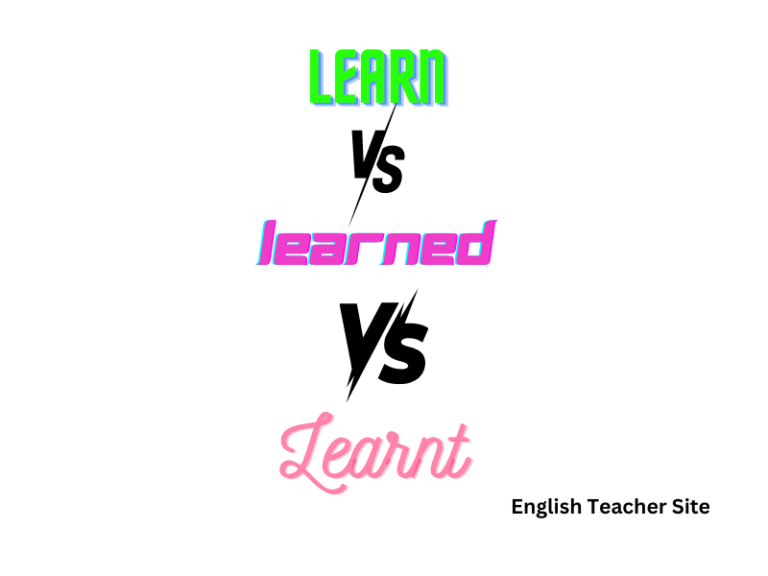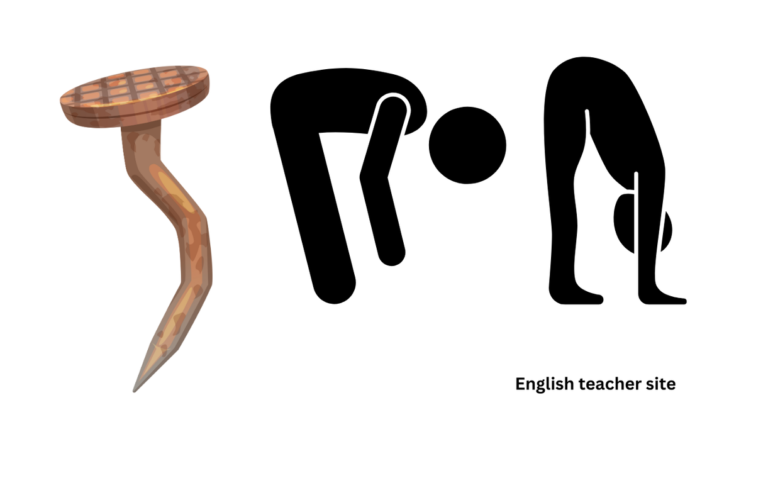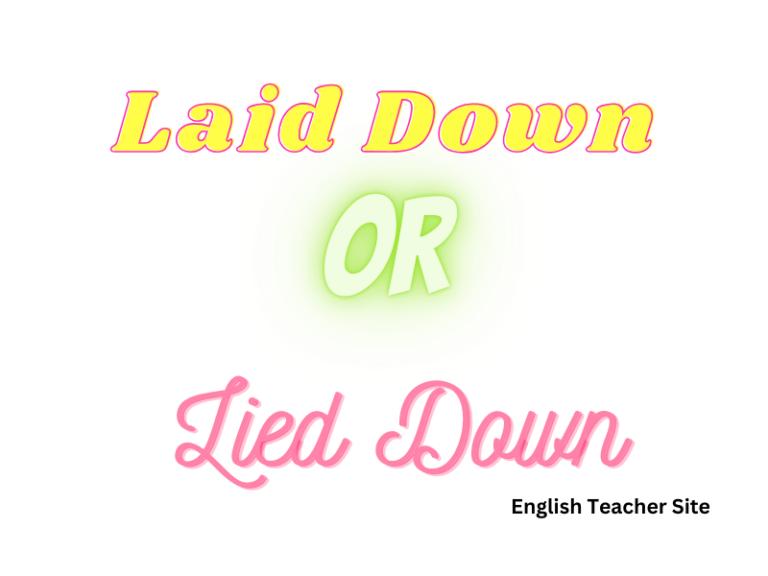What’s the Past Tense of Bring: Brung or Brought – Unraveling Common Verb Misconceptions

- “Brought” is the only standard past tense and past participle form of “bring.”
- Nonstandard forms “brang” and “brung” are not accepted in formal English.
- Correct use of “brought” applies to both past actions and past participles.
The use of “brought” is universally accepted in both spoken and written English, reflecting actions that have occurred in the past. It is applied in the same way regardless of whether “brought” is functioning as the past tense or the past participle. For example, one might say, “Yesterday, she brought her camera to the party,” or “She has brought her camera to every party this year.” Understanding the correct usage of “brought” enriches one’s language skills and ensures clarity in communication.
Key Takeaways
- “Brought” is the only standard past tense and past participle form of “bring.”
- Nonstandard forms “brang” and “brung” are not accepted in formal English.
- Correct use of “brought” applies to both past actions and past participles.
What’s the Past Tense of Bring: Bring, Brought, or Brung
Misconceptions can arise due to colloquial expressions, but only one form stands as the proper past tense.
Exploring the past tense forms of the verb “bring.”
Bring is an English verb that often creates confusion due to irregular conjugations in its past forms. Here is a straightforward breakdown to clarify the correct usage:
| Infinitive | Past Tense | Past Participle |
|---|---|---|
| bring | brought | brought |
The above table demarcates “brought” as both the past tense and the past participle form of “bring.” Colloquially, some might use “brung,” but it is not considered standard English.
- Brought is universally acknowledged as both the past tense and past participle of “bring.”
- “Brang” and “brung” can occasionally be heard in informal speech or dialects, but they do not conform to standard English norms.
- Using “brought” ensures clear communication and grammatical accuracy in both spoken and written English.
What’s the Past Tense of Bring? Bring, Brought, or Brung?
The past tense of “bring” is a topic that can be confusing, given the variety of forms verbs can take in English.
Brought is the standard past tense and past participle form of “bring.” It conforms to the pattern seen with most English verbs where the past tense is marked by a distinct suffix. In contrast, “bring” is the base form, or the present tense, while “brung” is a nonstandard variant that some may use in casual speech but is not accepted in formal writing.
To further clarify the forms:
| Tense | Form |
|---|---|
| Present | bring |
| Past Tense | brought |
| Past Participle | brought |
Some misconceptions include the use of “brang” or “brung,” but it is important to note that these are not standard English and should be avoided in formal communication.
The differing past tense forms of similar verbs, such as “sing” and “ring,” often lead to the mistaken usage of “brang” or “brung,” due to their past forms being “sang” and “rang,” respectively. English learners and even native speakers sometimes make this error.
In sum, the correct past forms of “bring” are as follows:
- Present: I/we/you/they bring, he/she/it brings
- Past: I/we/you/they/he/she/it brought
- Past Participle: have/has/had brought
Examples in sentences:
- Yesterday, she brought her camera to the event.
- They have brought their own bags to the store.
- He brought up a good point during the meeting.
Remember, proper verb usage is critical for clear and correct English communication.
Verb Tenses of Bring
In English grammar, the verb “to bring” denotes the action of carrying or conveying an object or person to the place where the speaker or listener is located. Understanding its correct usage is fundamental, especially in regard to its past forms.
Present Tense:
- I/You/We/They bring
- He/She/It brings
The present tense form is “bring” except for the third person singular, which adds an ‘s’ and becomes “brings”.
Past Tense:
The past tense of “bring” is “brought,” which is used for all subjects—singular and plural. Unlike some verbs in English, “bring” does not change form based on the subject. Here’s a table illustrating this uniform usage:
| Subject | Past Tense Form |
|---|---|
| I | brought |
| You | brought |
| He/She/It | brought |
| We | brought |
| They | brought |
Past Participle:
Similarly, the past participle form is also “brought”. This form is used in perfect tenses and passive voice constructions. For instance:
- I have brought my book.
- The documents were brought by the courier.
| Perfect Tense | Example Sentence |
|---|---|
| Present Perfect | She has brought her keys. |
| Past Perfect | They had brought lunch. |
| Future Perfect | He will have brought the reports. |
Common Mistakes:
When using the verb “bring” in the past, people sometimes mistakenly use “brung” or “brang”. These are nonstandard forms and are not considered correct in standard English. Therefore, they should be avoided, especially in formal writing.
- Correct: She brought her friend to the party.
- Incorrect: She brung her friend to the party.
Usage in Sentences:
- Present: They bring their children to school every day.
- Past: Yesterday, he brought his dog to the park.
- Past Participle: The gifts have been brought into the living room.
By using the term “brought” consistently for both the past tense and past participle forms of “bring,” one ensures clear and correct English communication.
Brought vs. Had/Has/Have Brought
In English grammar, understanding the distinctions between “brought” and “had/has/have brought” is key to mastering the past forms of the verb “to bring.” “Brought” is the simple past tense of the verb, while “had/has/have brought” forms the present perfect tense.
Simple Past Tense: “Brought”
- Usage: Indicates an action that was completed in the past at a specific time.
- Example: Yesterday, she brought her camera to the event.
Present Perfect Tense: “Has/Have Brought”
- Usage: Describes actions that occurred at an unspecified time or that have relevance to the present moment.
- Example: She has brought her camera to the events all month.
The distinction can also be observed in the form of questions and negatives:
| Simple Past “Brought” | Present Perfect “Has/Have Brought” |
|---|---|
| Did you bring the book? | Have you brought the book? |
| He didn’t bring it. | He hasn’t brought it. |
“Had brought” involves the past perfect tense:
Past Perfect Tense: “Had Brought”
- Usage: Describes an action that was completed before another action or time in the past.
- Example: She had brought the camera before the party started.
Using bullet points, here are some key uses of both tenses:
“Brought” (Simple Past)
- Reflects a completed action in the past.
- Does not require a connection to the present.
- Often used with past time expressions (e.g., yesterday, last week).
“Has/Have Brought” (Present Perfect)
- Suggests the action may still be relevant now.
- Does not specify when the action happened.
- Often used without a time expression, or with words like “already” or “yet.”
“Had Brought” (Past Perfect)
- Indicates a past action completed before another past action.
- Sets the sequence of past events.
- Often accompanied by past time expressions (e.g., before, after).
Is Bring a Regular or Irregular Verb?
The English verb “to bring” is considered an irregular verb. This determination is critical for learners as it affects how the verb changes across different tenses.
Categorizing Verb Type
To categorize “bring” properly, one must look at the way it forms its past tense and past participle. Regular verbs add “-ed” to their base form to create both the past tense and past participle. Irregular verbs, however, do not follow this pattern and can undergo a variety of changes.
Here is a comparison of the two verb types:
| Regular Verbs | Irregular Verbs |
|---|---|
| Talk -> Talked | Go -> Went |
| Listen -> Listened | Fly -> Flew |
| Call -> Called | Bring -> Brought |
In examining “to bring,” one can see that it does not adhere to the “add-ed” rule of regular verbs:
| Base Form | Past Tense | Past Participle |
|---|---|---|
| Bring | Brought | Brought |
The transformation from “bring” to “brought” clearly indicates its status as an irregular verb. “Bring” remains steadfast through its non-conformation to regular verb spelling rules. It is important for students to recognize these variations to master English verb conjugation.
Examples of the Word Bring (Present Tense) Used in Sentences
Here, we explore its usage through clear examples, aiding students in understanding and applying the present tense form of the verb appropriately.
Basic Structure with “Bring”
| Subject | Verb | Object | Completing Phrase |
|---|---|---|---|
| She | brings | her lunch | to work every day. |
| The teacher | brings | a lot of experience | to the classroom. |
Negative Sentences with “Do Not Bring”
- I do not bring my personal opinions into professional decisions.
- They do not bring electronic devices to the dinner table.
Emphasizing use in questions, the subject and verb can be inverted:
- Do you bring your ID when you go out?
- Does he bring his own equipment for the training sessions?
Using bullet points to list imperative forms:
- Bring your textbooks to class.
- Bring a pen and notebook for notes.
- Bring a positive attitude to team activities.
The present tense form of “bring” can denote a habitual action; for instance, “She brings her children to the park every afternoon.” It also serves to request or instruct in immediate situations, such as “Bring this package to the mailroom, please.”
Examples of Brought (Past Tense, in Sentences)
Here are several examples of “brought” in sentences, which can illustrate proper usage for learners.
Sentence Examples:
- Simple Past: She brought her friend to the party last night.
- Negative Form: He didn’t bring the documents as requested.
- Question Form: Did they bring enough food for everyone at the picnic?
Contextual Use of Brought:
| Context | Example Sentence |
|---|---|
| Accusative with People | Jane brought her kids to the new animated movie. |
| Accusative with Things | He brought a bottle of wine to the dinner. |
| With Prepositional Phrases | They brought up the issue during the meeting. |
The use of “brought” signifies an action completed in the past, and it functions in various sentence structures, including affirmative, negative, and interrogative forms.
Please note the following uses:
- She always brought her umbrella, even on sunny days — habitual action in the past.
- He brought his expertise to the table when the company needed it most — metaphorical use.
Examples of Brought as a Past Participle (in Sentences)
This section focuses on the usage of “brought” as the past participle form of the verb “bring”.
1. With “have” in perfect tenses:
In the perfect tenses, “brought” is used with the auxiliary verb “have” to indicate actions that have been completed at a specific time in the past or over a period of time.
- Example: She has brought her assignments on time throughout the semester.
2. In passive voice constructions:
Passive voice constructions often utilize past participles; “brought” serves to shift focus from the person performing the action to the action itself.
- Example: The innovations were brought to the market by the dedicated team.
Table 1: Usage of “brought” with various subjects
| Subject | Sentence |
|---|---|
| He | He has brought his own equipment to the job site. |
| They | They have brought a change to the community. |
| The cat | The cat has brought in a mouse from outside. |
| Ann and I | Ann and I have brought our best to the project. |
3. With modal auxiliary verbs:
Past participles can also pair with modal auxiliary verbs such as “could” or “should” to express conditional or hypothetical situations.
- Example: They could have brought a map to avoid getting lost.
4. In perfect infinitive phrases:
Finally, “brought” appears in perfect infinitive phrases to express actions completed before a specific time.
- Example: To have brought peace was his ultimate goal.
Table 2: Examples with modal verbs
| Modal Verb | Sentence |
|---|---|
| Could | By now, she could have brought her friend to the party. |
| Should | They should have brought more supplies on the camping trip. |
| Might | He might have brought up the issue during the meeting. |
| Would | Ann would have brought the documents if she had known. |
Synonyms of Bring
The synonyms of “bring” vary in terms of formality, context, and connotation, but they all relate to the idea of taking or carrying something to a place or person.
Convey and transport are both formal synonyms of “bring” used primarily in written language or specific contexts like legal or logistical discussions. While convey can refer to both physical and abstract items, such as thoughts or messages, transport is typically used for the physical moving of goods or people.
For a less formal tone or in casual communication, words such as fetch, lug, and tote might be more appropriate. These are common synonyms with a slightly informal connotation:
- Fetch implies going to get something and then bringing it back.
- Lug often suggests carrying something heavy or cumbersome.
- Tote refers to carrying something, usually in a container or bag.
In more colloquial settings, “bring” can be substituted with haul or schlep, which both denote the effort involved in moving something from one place to another, often with a sense of difficulty or unwillingness.
To articulate the act of bringing with an emphasis on the end point or purpose, one might use deliver or present:
- Deliver underscores the completion of bringing something to its intended recipient, often used in the context of goods or services.
- Present conveys the act of bringing something forward, particularly in the context of giving or showing.
Here is a concise representation of the synonyms categorized by formality and use-case:
| Formality | Synonyms |
|---|---|
| Formal | Convey, Transport |
| Informal | Fetch, Lug, Tote |
| Connotation | Synonyms |
|---|---|
| Effort | Haul, Schlep |
| Purpose | Deliver, Present |
These synonyms are valuable for enriching one’s vocabulary and enabling precise and varied expression.
Origin of the Verb Bring
The verb bring derives from the Old English bringan, meaning “to bring, to take, to fetch, to bear, or to endure.” The evolution of bring can be traced through various historical linguistic stages. Here’s a concise timeline illustrating how bring has developed through different languages:
| Language | Term | Meaning |
|---|---|---|
| Proto-Germanic | brangjanan | To bring or to lead |
| Old English | bringan | To bring, take, fetch |
| Middle English | bringen | To bring or to carry |
Across Germanic languages, there is a strong presence of the root that constitutes the English verb bring. For instance, the German verb bringen and the Gothic briggan bear a close resemblance to the English term, signifying the transportation of something to a place.
The past tense of bring has undergone its own evolution. Its most commonly accepted form in modern English is brought. Below is a comparative list of the verb’s past forms across its evolution:
- Old English past tense: brohte
- Old English past participle: broht
In contrast, brang and brung are nonstandard variations sometimes erroneously used in place of brought. The historical etymology of bring steers clear of these forms, which may have emerged through analogy to similar-sounding verbs like sing, sang, sung or ring, rang, rung.
Source
Etymology online, origin of bring
My name is Khamis Maiouf. I am the creator of the English Teacher Site, dedicated to providing valuable resources and insights for students around the world. With a passion for education and a commitment to helping students enhance their skills, I aim to make English teaching more effective and enjoyable for both educators and students.






